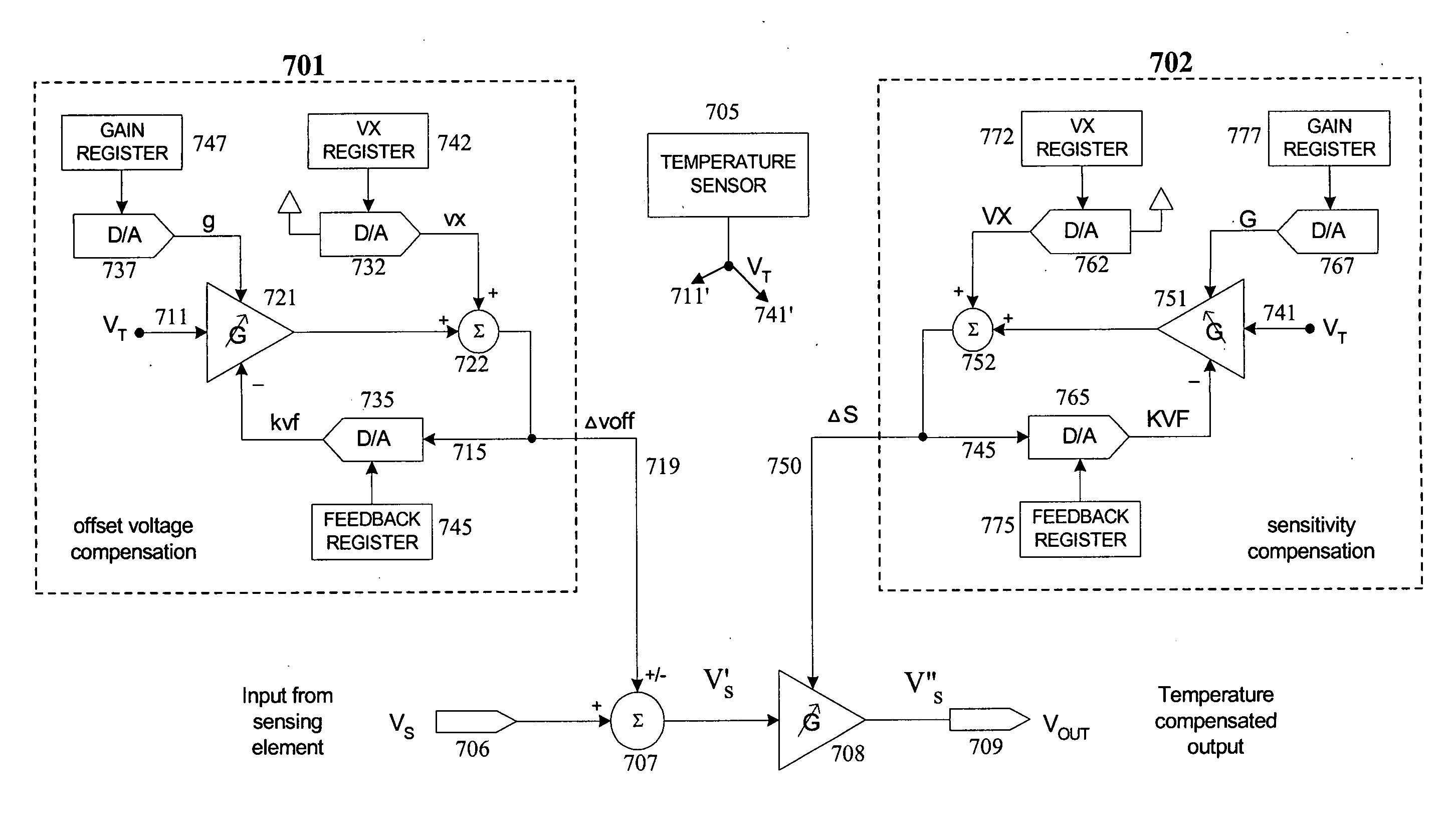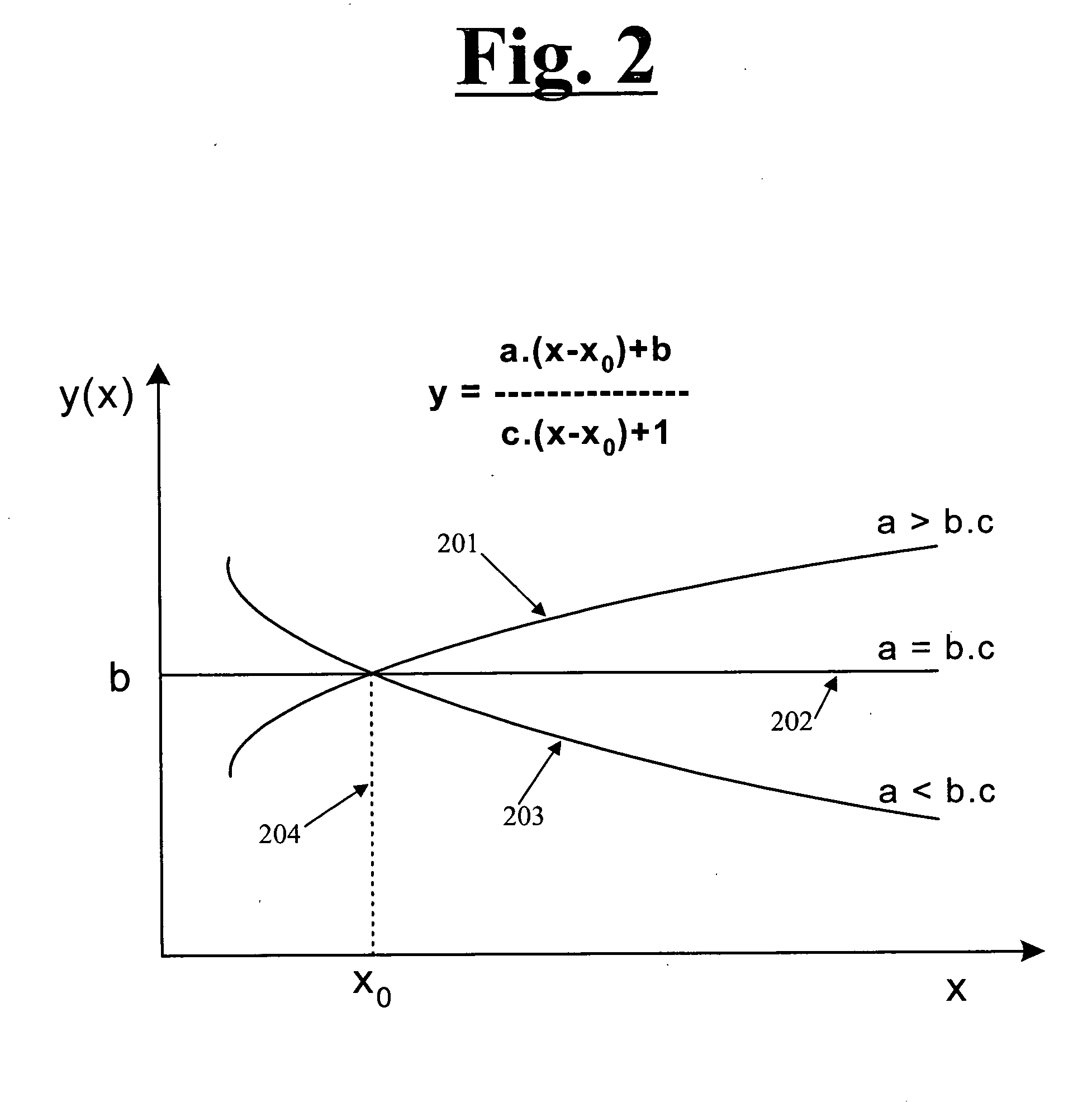Providing nonlinear temperature compensation for sensing means by use of Pade approximant function emulators
a nonlinear temperature compensation and sensing means technology, applied in the field of providing nonlinear temperature compensation, can solve the problems of inability to provide the required performance over a given temperature range, polynomial-based nonlinear temperature compensation techniques that are generally used, and are not suitable for sensing elements. , to achieve the effect of reducing the cost of mass production, programmable, and convenient operation
- Summary
- Abstract
- Description
- Claims
- Application Information
AI Technical Summary
Benefits of technology
Problems solved by technology
Method used
Image
Examples
Embodiment Construction
[0025] Padé Approximants may be formed by expanding a function as a ratio of two power series and determining both the numerator and denominator coefficients. Padé Approximants are usually superior to Taylor expansions when the modeled functions contain poles, because the use of rational functions allows such pole behavior to be well-represented. (See for example: the Wolfram Research Mathworld Web site, http: / / mathworld.wolfram.com / PadeApproximant.html).
[0026] In its general form, a Padé Approximant may be expressed as the ratio between two power series per equation Eq. 1: PL(x)QM(x)=p0+p1x+p2x2+ …+pLxL1+q1x+q2x2+…+qMxM(Eq. 1)
wherein x is the input variable, pL and qM are relatively constant coefficients and QM(x) is normalized in the example to provide QM(O)=1. If coefficients q1 through qM are set to zero, then equation Eq. 1 reduces to a Taylor expression having just the numerator coefficients, p0 through pL.
[0027] A Padé Approximant y1(x) having 1st order polynomi...
PUM
 Login to View More
Login to View More Abstract
Description
Claims
Application Information
 Login to View More
Login to View More - R&D
- Intellectual Property
- Life Sciences
- Materials
- Tech Scout
- Unparalleled Data Quality
- Higher Quality Content
- 60% Fewer Hallucinations
Browse by: Latest US Patents, China's latest patents, Technical Efficacy Thesaurus, Application Domain, Technology Topic, Popular Technical Reports.
© 2025 PatSnap. All rights reserved.Legal|Privacy policy|Modern Slavery Act Transparency Statement|Sitemap|About US| Contact US: help@patsnap.com



